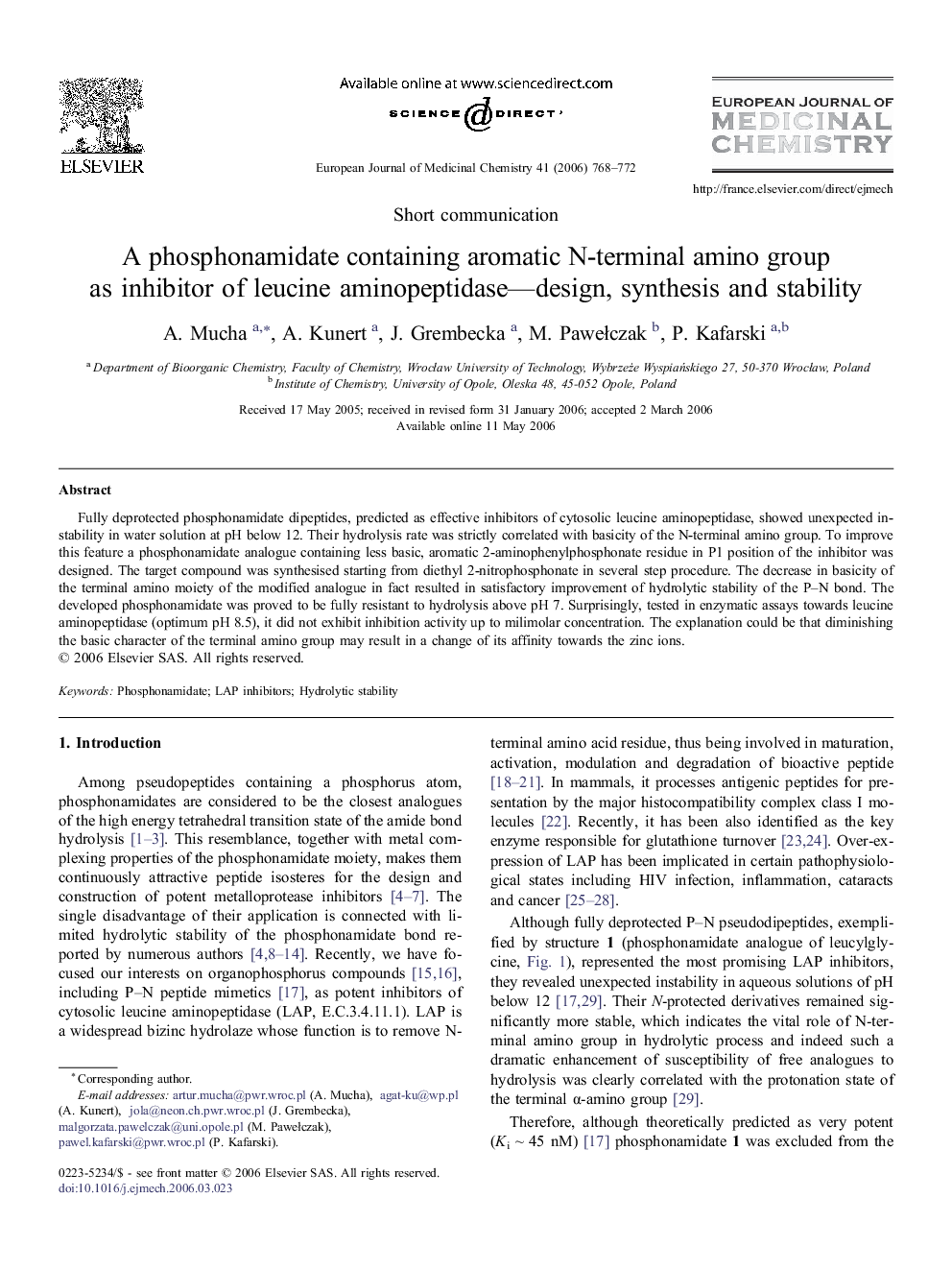| Article ID | Journal | Published Year | Pages | File Type |
|---|---|---|---|---|
| 1397159 | European Journal of Medicinal Chemistry | 2006 | 5 Pages |
Fully deprotected phosphonamidate dipeptides, predicted as effective inhibitors of cytosolic leucine aminopeptidase, showed unexpected instability in water solution at pH below 12. Their hydrolysis rate was strictly correlated with basicity of the N-terminal amino group. To improve this feature a phosphonamidate analogue containing less basic, aromatic 2-aminophenylphosphonate residue in P1 position of the inhibitor was designed. The target compound was synthesised starting from diethyl 2-nitrophosphonate in several step procedure. The decrease in basicity of the terminal amino moiety of the modified analogue in fact resulted in satisfactory improvement of hydrolytic stability of the P–N bond. The developed phosphonamidate was proved to be fully resistant to hydrolysis above pH 7. Surprisingly, tested in enzymatic assays towards leucine aminopeptidase (optimum pH 8.5), it did not exhibit inhibition activity up to milimolar concentration. The explanation could be that diminishing the basic character of the terminal amino group may result in a change of its affinity towards the zinc ions.
Graphical abstractA phosphonamidate containing 2-aminophenylphosphonate was designed and synthesised as inhibitor of leucine aminopeptidase. Decreased basicity of the N-terminal amino group resulted in improvement of the P–N bond hydrolytic stability; however, it negatively influenced the inhibitory activity.Figure optionsDownload full-size imageDownload as PowerPoint slide
